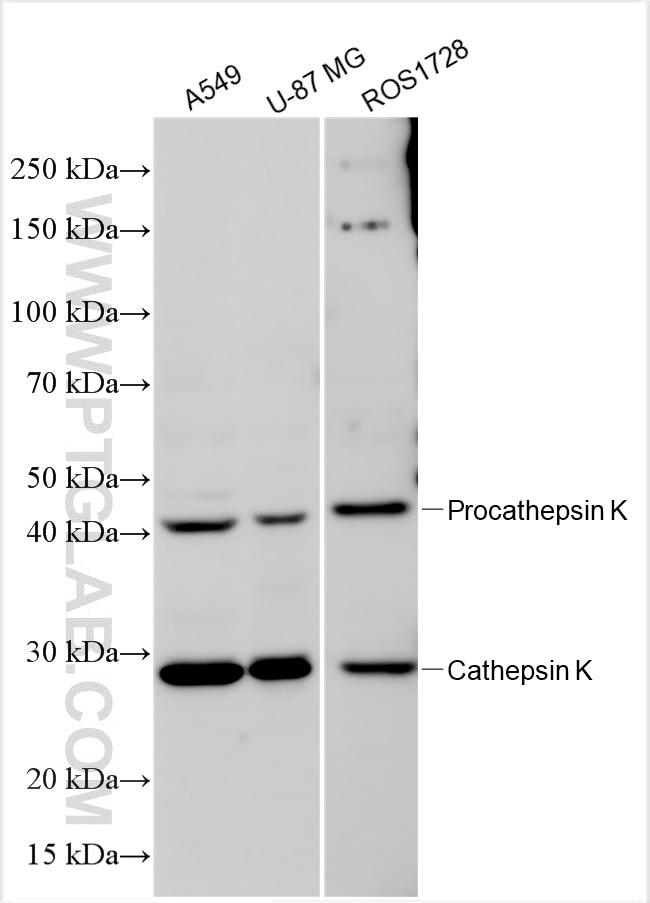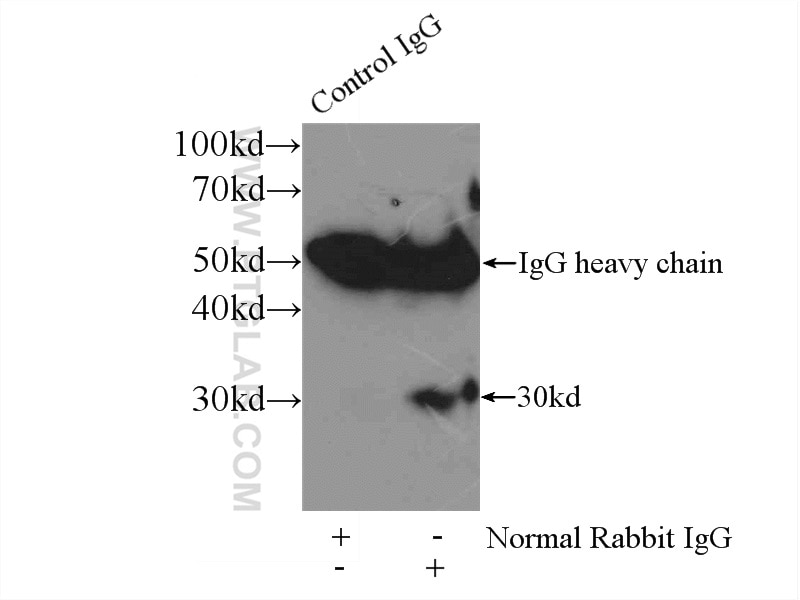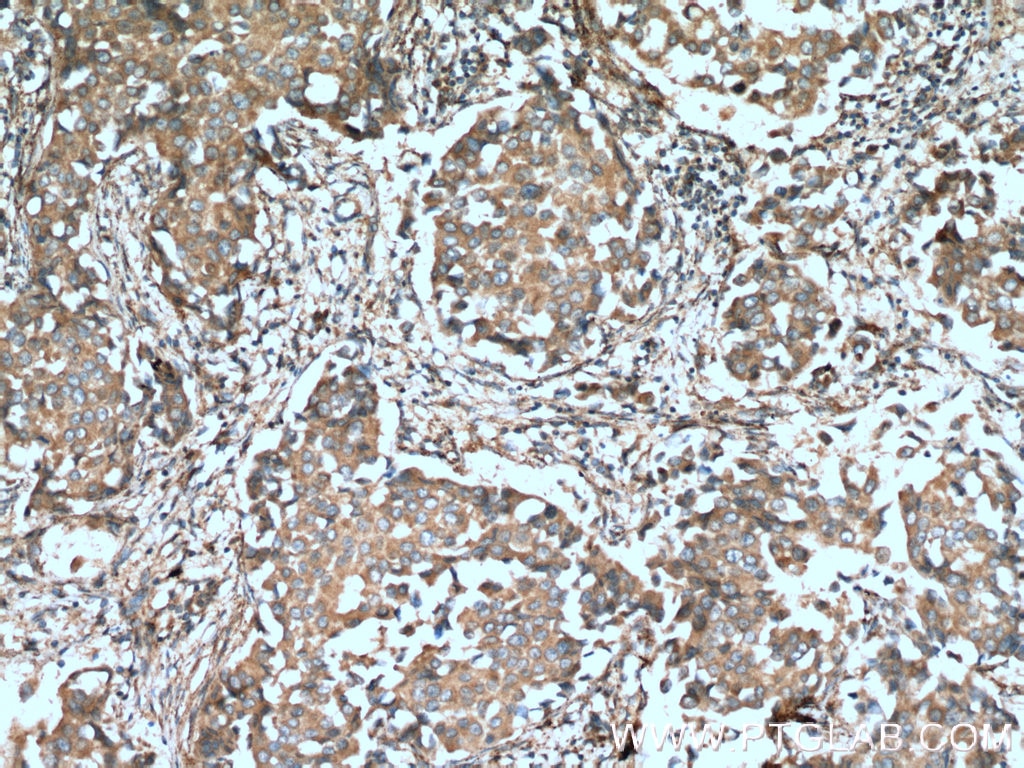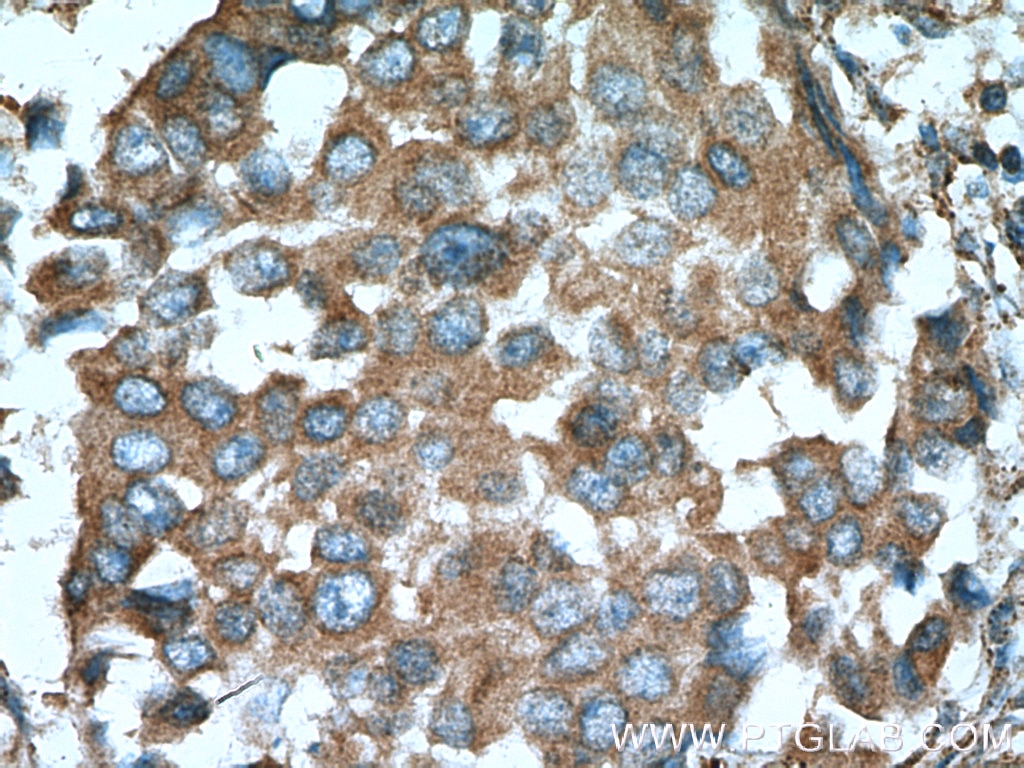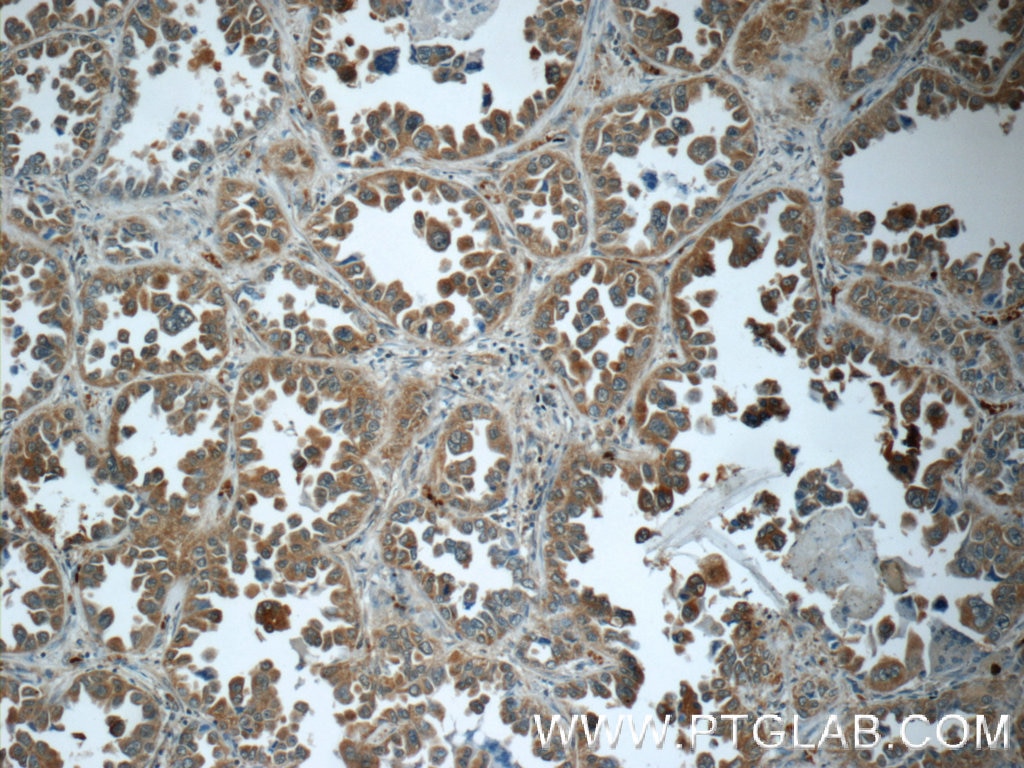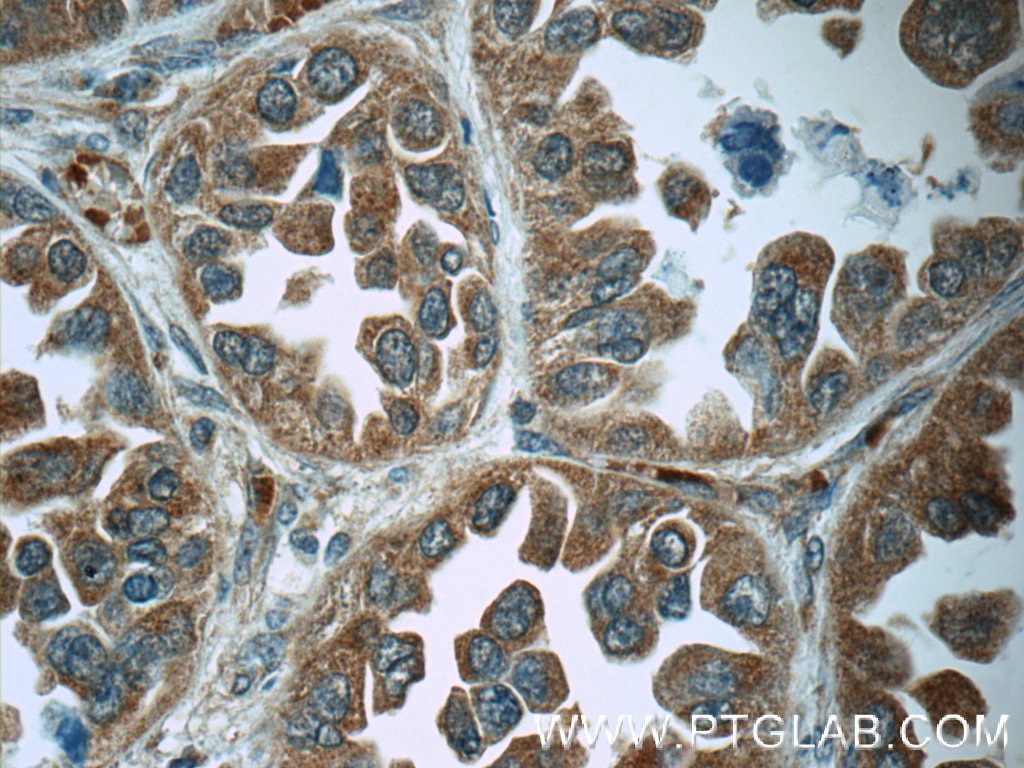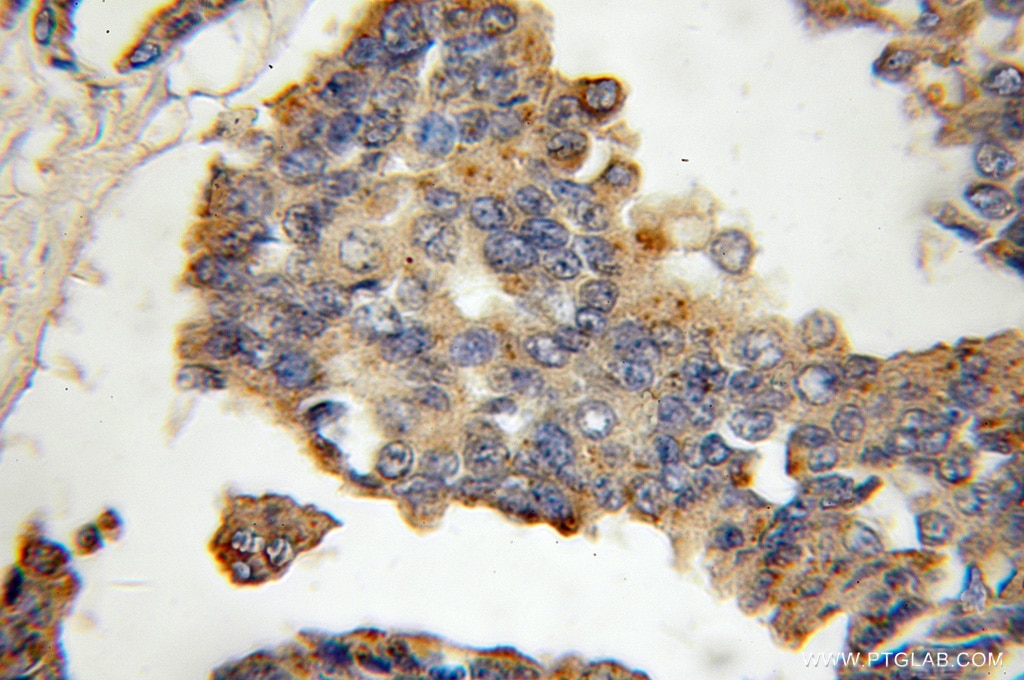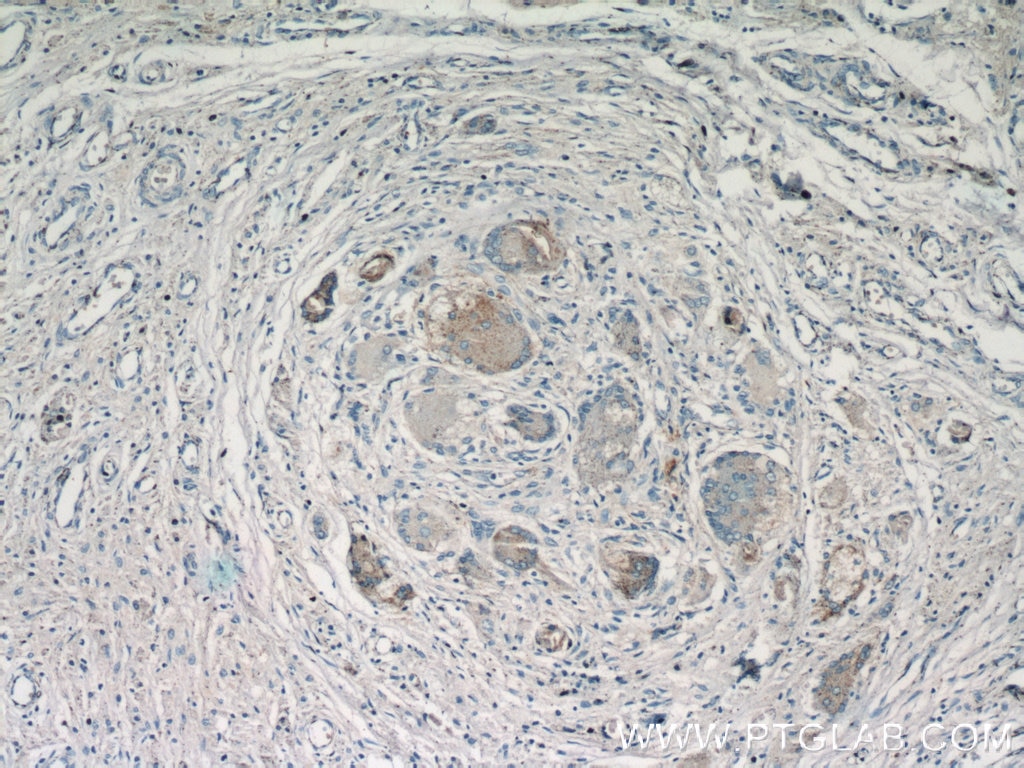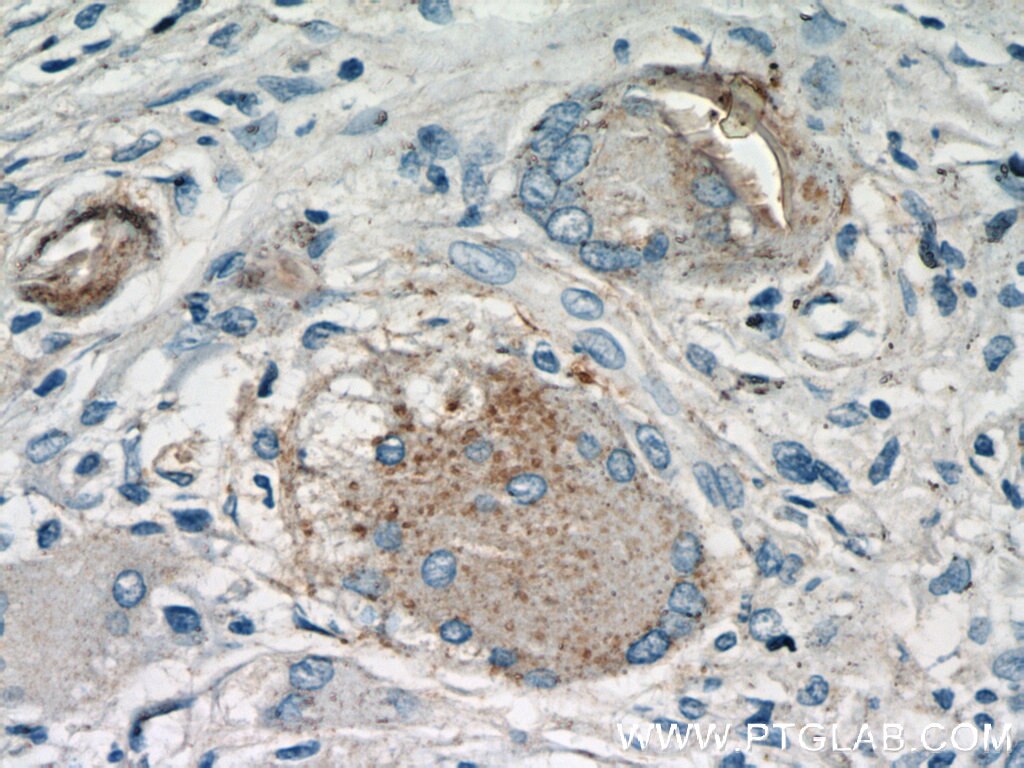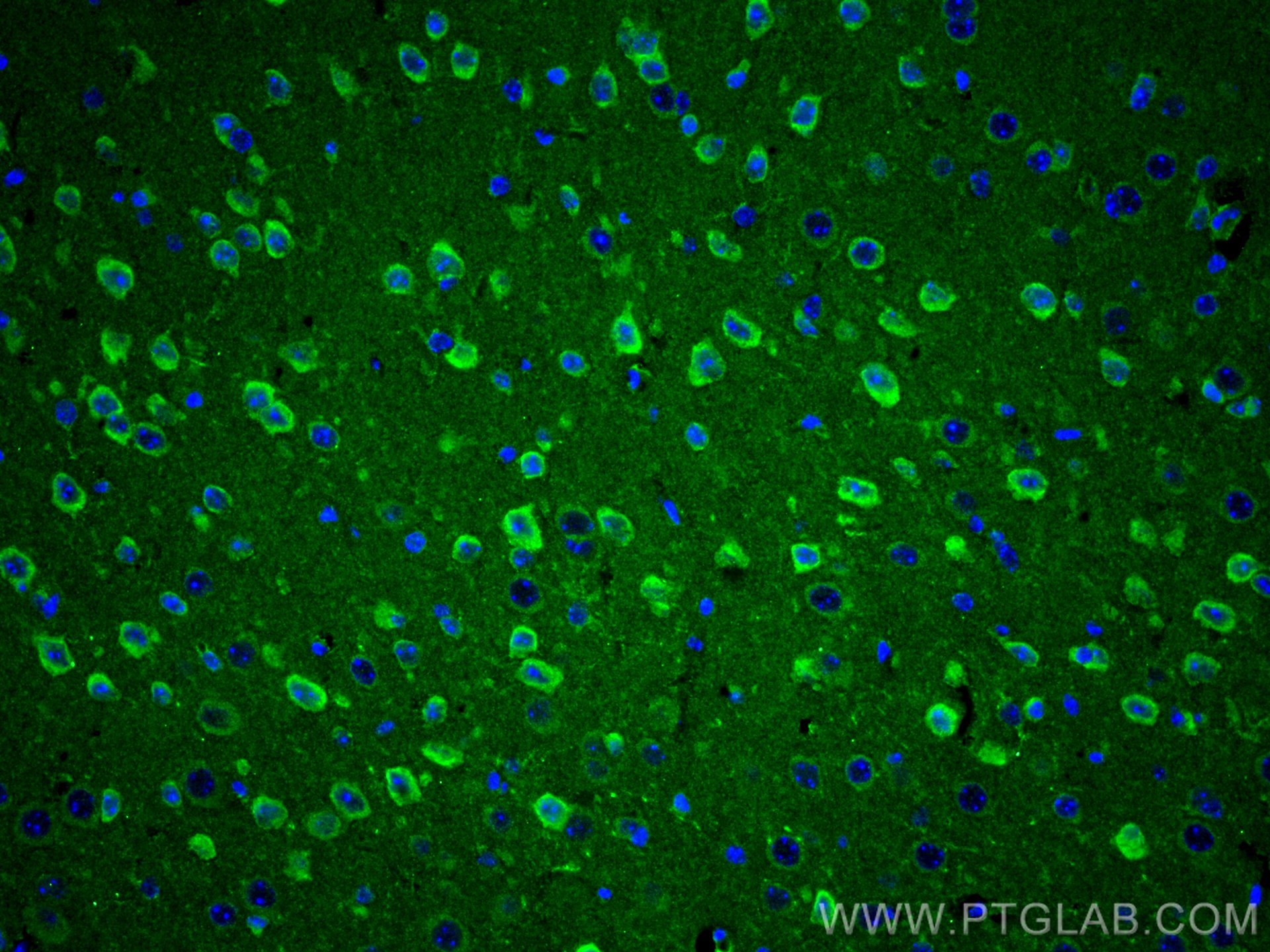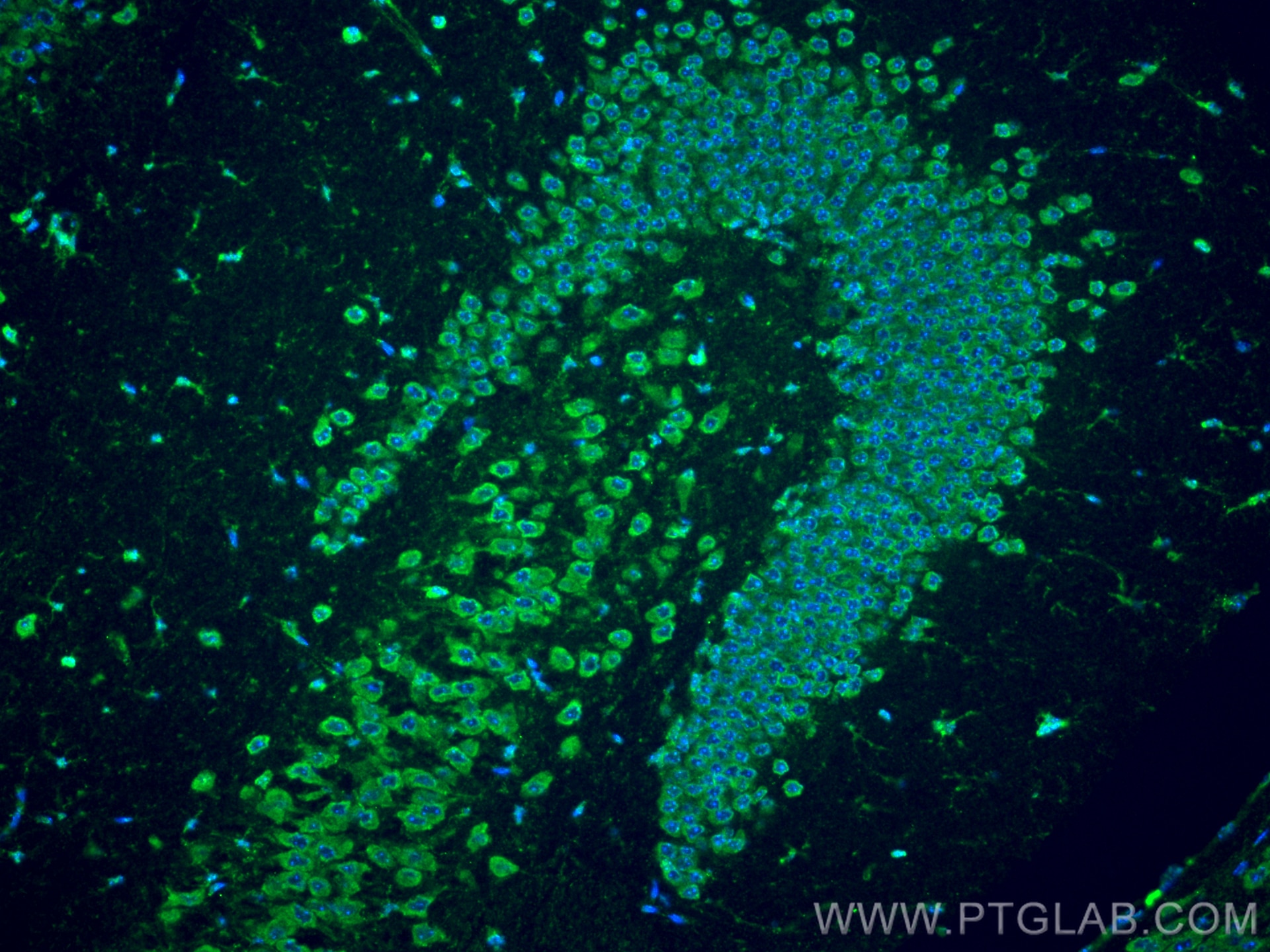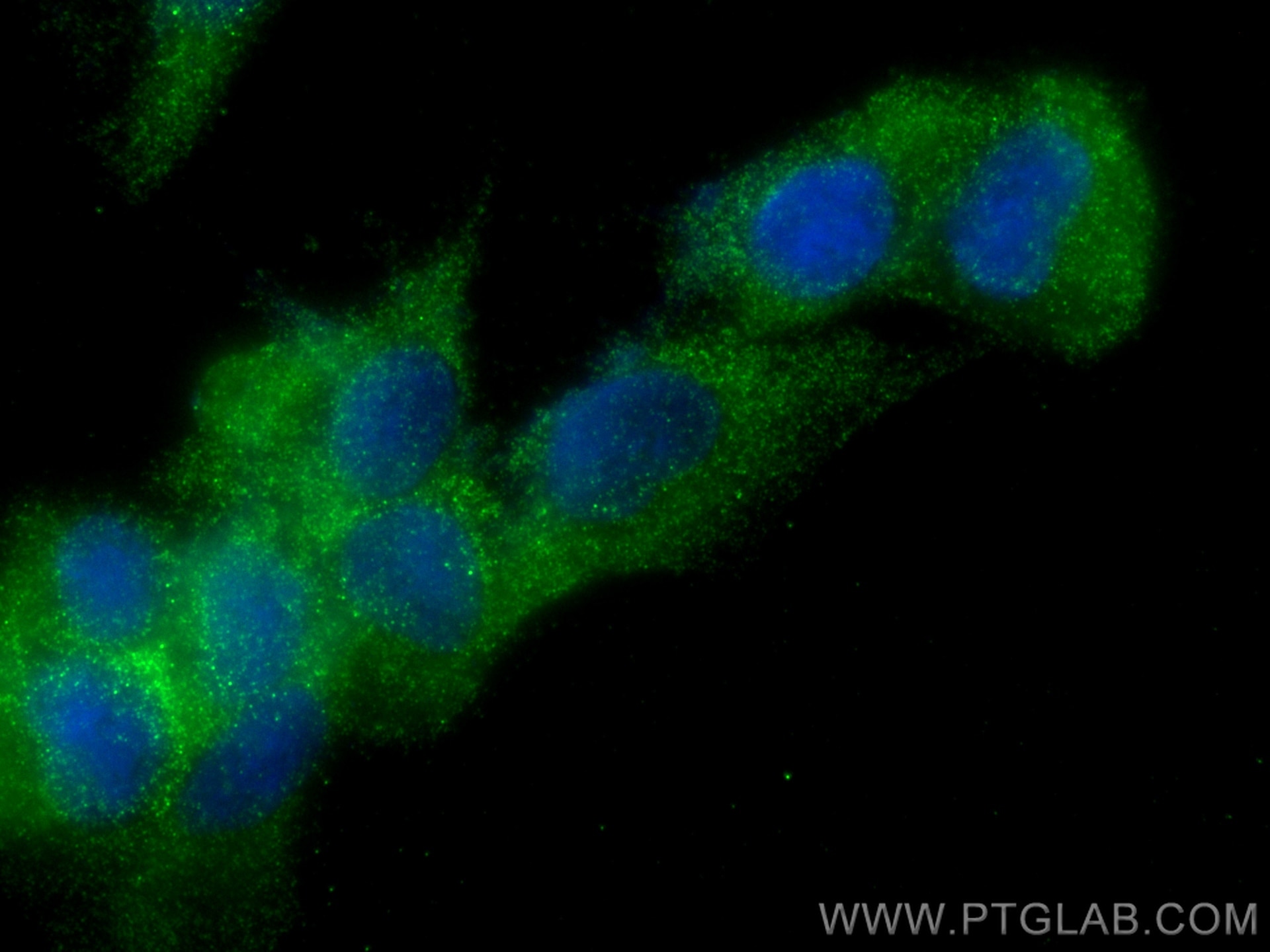- Featured Product
- KD/KO Validated
Cathepsin K Polyklonaler Antikörper
Cathepsin K Polyklonal Antikörper für WB, IHC, IF/ICC, IF-P, IP, ELISA
Wirt / Isotyp
Kaninchen / IgG
Getestete Reaktivität
human, Maus, Ratte und mehr (1)
Anwendung
WB, IHC, IF/ICC, IF-P, IP, ELISA
Konjugation
Unkonjugiert
Kat-Nr. : 11239-1-AP
Synonyme
Geprüfte Anwendungen
| Erfolgreiche Detektion in WB | A549-Zellen, ROS1728-Zellen, U-87 MG-Zellen |
| Erfolgreiche IP | ROS1728-Zellen |
| Erfolgreiche Detektion in IHC | humanes Mammakarzinomgewebe, humanes Lungenkarzinomgewebe, humanes Osteosarkomgewebe Hinweis: Antigendemaskierung mit TE-Puffer pH 9,0 empfohlen. (*) Wahlweise kann die Antigendemaskierung auch mit Citratpuffer pH 6,0 erfolgen. |
| Erfolgreiche Detektion in IF-P | Maushirngewebe |
| Erfolgreiche Detektion in IF/ICC | ROS1728-Zellen |
Empfohlene Verdünnung
| Anwendung | Verdünnung |
|---|---|
| Western Blot (WB) | WB : 1:500-1:1000 |
| Immunpräzipitation (IP) | IP : 0.5-4.0 ug for 1.0-3.0 mg of total protein lysate |
| Immunhistochemie (IHC) | IHC : 1:100-1:400 |
| Immunfluoreszenz (IF)-P | IF-P : 1:50-1:500 |
| Immunfluoreszenz (IF)/ICC | IF/ICC : 1:200-1:800 |
| It is recommended that this reagent should be titrated in each testing system to obtain optimal results. | |
| Sample-dependent, check data in validation data gallery | |
Veröffentlichte Anwendungen
| KD/KO | See 1 publications below |
| WB | See 68 publications below |
| IHC | See 14 publications below |
| IF | See 19 publications below |
Produktinformation
11239-1-AP bindet in WB, IHC, IF/ICC, IF-P, IP, ELISA Cathepsin K und zeigt Reaktivität mit human, Maus, Ratten
| Getestete Reaktivität | human, Maus, Ratte |
| In Publikationen genannte Reaktivität | human, Maus, Ratte, Zebrafisch |
| Wirt / Isotyp | Kaninchen / IgG |
| Klonalität | Polyklonal |
| Typ | Antikörper |
| Immunogen | Cathepsin K fusion protein Ag1761 |
| Vollständiger Name | cathepsin K |
| Berechnetes Molekulargewicht | 39 kDa |
| Beobachtetes Molekulargewicht | 27 kDa, 38~46 kDa |
| GenBank-Zugangsnummer | BC016058 |
| Gene symbol | Cathepsin K |
| Gene ID (NCBI) | 1513 |
| Konjugation | Unkonjugiert |
| Form | Liquid |
| Reinigungsmethode | Antigen-Affinitätsreinigung |
| Lagerungspuffer | PBS with 0.02% sodium azide and 50% glycerol |
| Lagerungsbedingungen | Bei -20°C lagern. Nach dem Versand ein Jahr lang stabil Aliquotieren ist bei -20oC Lagerung nicht notwendig. 20ul Größen enthalten 0,1% BSA. |
Hintergrundinformationen
CTSK(cathepsin K), also named CTSO, CTSO2, is a recently identified lysosomal cysteine proteinase. CTSK is synthesized as a proenzyme of 38 kDa and subsequently enters acidic lysosomal compartments, in which the propeptide is cleaved and transformed into an active enzyme and it may influence adipocyte differentiation through modifying extracellular matrix components(PMID:16912123). It is revealed both the 46-kDa cathepsin-K precursor and the 30-kDa mature form in mouse bone extracts (PMID:9811821). The high CTSK protein levels are only detected in primary cultured fibroblasts derived from normal and neoplastic breast tissue, where the 37- and 25-kDa bands to be detected correspond to pro- and mature proteins through western blot (PMID:18765527). The full length protein has a signal peptides with 15 amino acids and a propeptide with 99 amino acids. CTSK may have cross reaction with the other members of cathepsin family and form a complex of 70 kDa with an unidentified subunit(PMID:1930136).
Protokolle
| PRODUKTSPEZIFISCHE PROTOKOLLE | |
|---|---|
| WB protocol for Cathepsin K antibody 11239-1-AP | Protokoll herunterladen |
| IHC protocol for Cathepsin K antibody 11239-1-AP | Protokoll herunterladenl |
| IF protocol for Cathepsin K antibody 11239-1-AP | Protokoll herunterladen |
| IP protocol for Cathepsin K antibody 11239-1-AP | Protokoll herunterladen |
| STANDARD-PROTOKOLLE | |
|---|---|
| Klicken Sie hier, um unsere Standardprotokolle anzuzeigen |
Publikationen
| Species | Application | Title |
|---|---|---|
Biomaterials BMP2 immune complexes promote new bone formation by facilitating the direct contact between osteoclasts and osteoblasts. | ||
Dev Cell Gasdermin D maintains bone mass by rewiring the endo-lysosomal pathway of osteoclastic bone resorption | ||
ACS Appl Mater Interfaces Nel-like Molecule Type 1 Combined with Gold Nanoparticles Modulates Macrophage Polarization, Osteoclastogenesis, and Oral Microbiota in Periodontitis | ||
Br J Pharmacol Andrographolide prevents bone loss via targeting ERRalpha-regulated metabolic adaption of osteoclastogenesis. | ||
Arthritis Rheum Osteoarthritic change is delayed in a Ctsk-knockout mouse model of osteoarthritis. |
Rezensionen
The reviews below have been submitted by verified Proteintech customers who received an incentive for providing their feedback.
FH Isabel (Verified Customer) (07-03-2020) | Antibody worked really well to detect Cathepsin K in protein from mouse osteoclasts. Blot was really clean with no other bands.
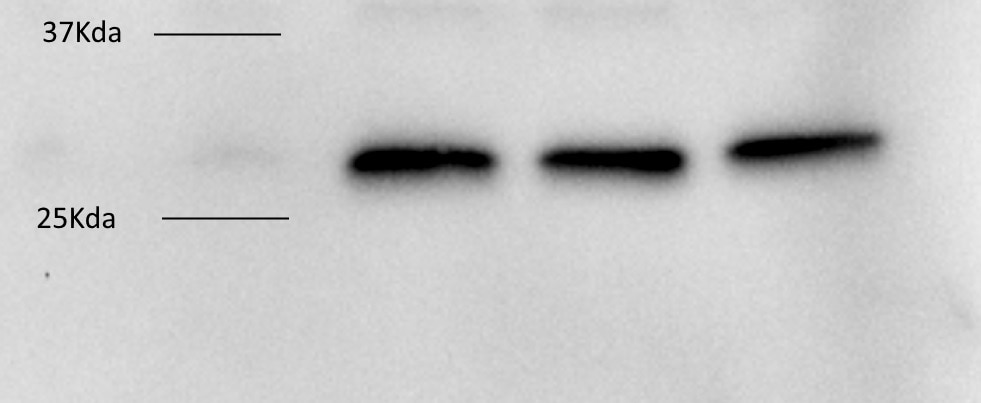 |
FH RICHA (Verified Customer) (10-09-2019) | Good but hard to get the signal
 |
